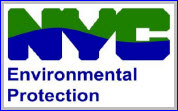
What Do Insurers Need to Know After the New Jersey Remedial Investigations Deadline?
The pace of Remedial Investigations (RI) and Remedial Actions (RA) in New Jersey has quickened in the first five years of the Licensed Site Remediation Professional (LSRP) program. This was the intent of the Site Remediation Reform Act (SRRA), which was enacted in March 2009 and created the LSRP program. For many Responsible Parties (RPs) and their insurers, this has allowed for more streamlined and cost-effective investigations and remedial actions, albeit with faster rates of spending in the short term.
However, a large number of sites have not met one or both of the mandatory time frames established by SRRA and may soon be the subject of enforcement by the New Jersey Department of Environmental Protection (NJDEP).
- May 7, 2012 - the first Mandatory Timeframe in SRRA – was the date by which all sites (with very limited exclusions) were required to hire an LSRP to oversee the remediation. As of June 2014 (two years post-deadline), the NJDEP website lists over 1700 sites which have not yet engaged an LSRP.
- May 7, 2014 - the second Mandatory Timeframe specified in SRRA – was the date that sites with spills/releases dating prior to May 7, 1999 (more than 15 years old) had to complete the Remedial Investigation.
On January 17, 2014, Governor Christie signed
P.L.2013, c.283, authorizing a two-year extension of the RI deadline to those RPs/sites that complied with other applicable requirements, on the condition that they post financial assurance for the remaining cost of RI completion. According to the NJDEP, a total of 1239 sites/RPs applied for and received the RI extension to May 7, 2016.
NJDEP has not yet published statistics on the large number of sites that completed and submitted RIs in the days approaching the deadline, nor the number of sites (including many of the 1700 sites with no LSRP) who missed the important RI deadline without obtaining an extension.
According to SRRA, sites that miss these Mandatory Timeframes are automatically subject to Direct Oversight, which means:
-
The LSRP must report directly to an assigned NJDEP Case Manager;
-
The NJDEP Case Manager selects the remedy; and
-
The RP must conduct a cost review within 60 days and then post a Remediation Funding Source (RFS), in the form of cash in a trust fund (only), for the full cost of the remediation.
The NJDEP is still working out its own enforcement priorities and procedures. However, as these are statutory deadlines, NJDEP’s hands are tied as to its ability to remain flexible. It remains to be seen how the requirement to post the RFS will affect insurers, in terms of both ultimate costs and timing of demands for payment.
While we are past the first major RI milestone for the oldest sites, almost all sites in the program prior to March 1, 2010 have upcoming Regulatory and Mandatory Timeframes for both the RI and RA.
- In addition to the May 7, 2016 deadline for pre-1999 sites with the RI extension, RI deadlines range from March 1, 2015 (RI Regulatory Timeframe for soil-only and select other sites) to March 1, 2019 (Mandatory Timeframe for sites with groundwater and other media).
- RA Mandatory Timeframes range from as soon as the May 7, 2017 Mandatory Timeframe for remediation of pre-1999 soil-only sites (May 7, 2019 for other media) to a March 1, 2024, RA Mandatory Timeframe for groundwater cases initiated prior to March 1, 2010.
The RA deadlines have received much less attention than the RI deadlines and are quickly approaching for the pre-1999 sites. Like the statutory RI timeframe, the May 2017 and May 2019 Mandatory RA Timeframes for pre-1999 sites cannot be extended without legislative action. The NJDEP has stated that sites that received an extension to the May 2014 RI deadline did not receive an extension to the 2017 or 2019 RA deadline.
These various Regulatory and Mandatory Timeframes result in virtually every New Jersey site having applicable Regulatory and Mandatory Timeframes for both RI and RA over the next ten years. Considering the number of years it took to accumulate this backlog, the current fast pace of remediation will need to be maintained for the foreseeable future.
For information regarding New Jersey remediation timeframes and other LSRP-related information, or if you want to learn about Roux Associates Insurance services, click below and we will be happy to customize a brownbag / technical presentation to suit your needs.
Roux Associates, Inc. is a professional services firm providing a broad range of consulting and project management services to solve complex environmental issues associated with air, water and land. We have been providing these services to an impressive list of Fortune 500 and public sector clients nationwide for over 30 years through six offices, which are located in California, Illinois, Massachusetts, New Jersey and New York.










 Green Infrastructure Grant Program FAQ's
Green Infrastructure Grant Program FAQ's Engineered Natural Systems (ENS®)
Engineered Natural Systems (ENS®)